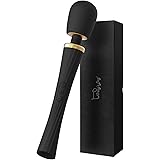The Role of Art and Creativity in Exploring Sexuality

Introduction: The Intersection of Art and Sexuality
Art and creativity have long been recognized as essential mediums through which individuals can explore and express their identity, including the intricate facets of sexuality. Through various artistic forms, such as visual art, music, literature, and performance, people can convey their experiences, desires, and emotions related to their sexual identity. These expressive outlets not only foster personal insights but also contribute to broader conversations about sexuality within society. In this context, art functions as a mirror reflecting the complexities of human sexuality, allowing both creators and audiences to engage in meaningful dialogues.
The relationship between art and sexuality is multifaceted. Artists often utilize their work to challenge societal norms, question conventions, and celebrate diversity in sexual expression. By doing so, they provide a platform for marginalized voices, fostering an inclusive environment where various sexual identities can be acknowledged and appreciated. This intersection allows for the creation of a communal space that invites reflection on individual experiences, thus facilitating deeper understanding and acceptance of one’s sexuality.
Moreover, engaging in artistic creation can be a transformative experience for individuals grappling with their sexual identity. Creative processes inherently promote self-discovery and reflection, aiding individuals in processing complex feelings associated with their sexuality. By translating personal narratives into art, creators can articulate their internal struggles and triumphs, making their experiences accessible to others. Consequently, this artistic expression encourages empathy and connection among viewers, allowing them to recognize and appreciate the diverse spectrum of human sexuality.
As we delve deeper into the role of various art forms in exploring sexuality, it becomes essential to understand the significance of creativity as a tool for personal expression. The subsequent sections will discuss specific artistic mediums, examining how they contribute to understanding and communicating the diverse aspects of sexual identity.
The Historical Context: Art as a Reflection of Sexuality
Throughout history, art has served as a vital medium for the exploration and expression of sexuality. Various cultures and epochs have utilized artistic expressions to address complex themes of love, desire, and sexual identity, reflecting societal norms and attitudes of their times. From ancient civilizations to contemporary movements, the interpretation of sexuality through art has evolved, yet its significance remains steadfast.
In ancient Greece, for instance, pottery and sculpture frequently depicted scenes of eroticism and intimacy, highlighting the society’s vantage point on love and sexual relationships. These artistic works were not merely for aesthetic appreciation but served as a means to communicate cultural norms around sexuality, including ideas about beauty, pleasure, and the nuances of human connection. Similarly, in Japan, the Edo period witnessed the emergence of Ukiyo-e woodblock prints, which showcased sensual themes and intimate moments, affecting public perception and understanding of sexual customs.
The Renaissance era marked a pivotal moment in the engagement with sexual themes in art. Artists such as Botticelli and Titian explored complex notions of desire and sensuality in their works, often intertwining religious context with erotic undertones. These pieces not only captured the human form in its natural beauty but simultaneously questioned the societal constraints surrounding sexuality of the period.
Moving forward to the 20th century, the modernist movement brought forth a more open discourse surrounding sexuality in art, with figures like Georgia O’Keeffe and Henri Matisse challenging traditional notions of erotic expression. Their works reflected an evolving understanding of sexual identity, breaking free from conventional boundaries and paving the way for future artists to explore themes of sexuality in a more liberated manner.
In conclusion, from ancient to contemporary art, sexual themes have provided a rich tapestry for artists to explore and challenge societal norms. Art continues to be a powerful lens through which we can examine the fluidity and complexity of sexuality, underscoring its ongoing role in shaping societal conversations.
The Power of Visual Arts: Painting, Sculpture, and Photography
The realm of visual arts, encompassing techniques such as painting, sculpture, and photography, serves as a powerful vehicle for exploring and expressing complex sexual emotions and narratives. Artists have long utilized these mediums to articulate intimate experiences, illustrating the myriad facets of human sexuality. Through their work, they challenge societal norms and provoke discourse surrounding topics that are often considered taboo.
In painting, artists harness color, form, and composition to convey intimate feelings. The brush strokes can evoke sensuality, vulnerability, or even eroticism, allowing the viewer to connect with the artwork on a personal level. Classic and contemporary painters alike have addressed themes of desire, identity, and the body, reflecting the evolving perceptions of sexuality throughout history. Such vibrant and evocative works can dismantle preconceived notions, inviting audiences to reconsider their understanding of sexual expression.
Sculpture adds a tangible dimension to this exploration. Sculptors can bring to life the human form, presenting it in various states of undress or abstraction. The physicality of sculpture encourages engagement, as viewers are prompted to navigate around the piece, often reflecting on their own relationship with sexual identity and desire. By dissecting the body in art, sculptors engage in a dialogue about the diverse expressions of sexuality and the cultural implications surrounding those representations.
Photography, as a medium, captures fleeting moments, enabling artists to freeze and present raw emotion. The lens can reveal vulnerability or strength in the portrayal of individuals, acting as a powerful commentary on sexual identity and societal expectations. Photographers often craft narratives that explore themes of intimacy, consent, and the fluidity of sexual orientation, thus expanding the conversation around these pivotal issues.
Music as a Vehicle for Sexual Expression
Music has long served as a powerful medium for expressing and exploring various aspects of human experience, and sexuality is no exception. Through its diverse genres, lyrical content, and emotional resonance, music provides a unique platform for individuals to navigate and articulate their sexual identities. The interplay of sound, rhythm, and lyrics can evoke complex feelings, enabling listeners to connect with their own experiences and those of others.
Songwriting is an essential facet of this exploration. Many artists use their craft to express intimate thoughts and desires, often candidly discussing aspects of their sexual orientation, experiences, and relationships. For instance, contemporary pop and R&B artists have gained recognition for their bold lyrics addressing themes of love and attraction towards different genders. This visibility encourages listeners to embrace their own sexuality, fostering a sense of belonging and validation.
Moreover, the performance aspect of music contributes significantly to sexual expression. Live performances often create an exhilarating atmosphere, allowing artists to express their identities and emotions physically. Through movement, stage presence, and visual aesthetics, musicians convey messages about sexuality that transcends the lyrics alone. This embodiment of sensuality can resonate deeply with audiences, highlighting the myriad ways sexuality can be explored and celebrated.
Listening to music also plays a crucial role in this process. Many individuals turn to certain songs or artists when reflecting on their own sexual experiences or when seeking solace during times of confusion or self-discovery. The evocative nature of music can evoke nostalgia or inspire confidence, encouraging individuals to explore their desires and feelings more openly. Thus, music functions as both a personal and collective tool for sexual expression, enabling listeners and performers alike to investigate the complexities of their identities.
Writing and Literature: Navigating Sexual Identity
Writing and literature have long served as vital outlets for individuals grappling with their sexual identities and experiences. Through various genres, such as poetry, fiction, and memoirs, authors articulate their feelings and experiences, thereby facilitating both personal reflection and broader societal conversation about sexuality. This exploration of sexual identity can be seen in works that delve into love, desire, and the complexities that accompany them.
Poetry, in particular, offers a condensed and often emotional medium for articulating the nuances of sexual experiences. Poets can capture fleeting moments of desire, the ache of unrequited love, or the liberation found in sexual exploration. The rhythmic and evocative nature of poetry allows for an eloquent expression of feelings that might otherwise go unspoken. For instance, poets often use metaphor and imagery to convey profound insights about their sexual selves, creating a bridge for readers who may resonate with similar experiences.
Fiction also plays a crucial role in exploring sexuality through character development and narrative arcs. Novels often showcase multifaceted characters dealing with issues of sexual identity, providing readers with diverse perspectives on love and attraction. Through storytelling, readers can engage with complex situations and emotions, fostering empathy and understanding toward their own and others’ sexual journeys.
Memoirs represent another significant genre where authors share their personal stories relating to sexuality. Memoirs allow individuals to recount their journeys with authenticity, revealing how their sexual identities have shaped their lives. These narratives not only inform readers about varied experiences but also create safe spaces for discussion and validation of feelings that many may struggle to articulate.
Through these literary forms, writing becomes a powerful tool for exploring and understanding sexuality. It fosters an environment where writers and readers alike can navigate their identities with greater clarity and acceptance. As a result, literature not only reflects diverse sexual experiences but also emphasizes the importance of articulating these identities in a rapidly evolving society.
The Role of Performance Art: Expressing Sexuality Dynamically
Performance art serves as a vital medium for exploring and expressing sexuality in a dynamic and impactful manner. Unlike traditional art forms that may rely heavily on static representation, performance art embodies an experiential nature that invites both the performer and the audience into an active dialogue surrounding sexual identity and liberation. By utilizing the immediacy of live performance, artists are able to break down barriers and create spaces where societal norms regarding sexuality can be challenged and redefined.
Through various forms of expression, including movement, spoken word, and visual elements, performance artists can convey the complexities of sexual experiences and identities. This medium transcends the limitations of conventional visual arts by engaging audiences not only intellectually but also emotionally and physically. The immediacy of witnessing a performance allows for an intimate exploration of themes such as desire, gender fluidity, and sexual empowerment. Audiences become part of the experience, fostering a sense of community and shared understanding.
Moreover, performance art often addresses taboo topics related to sexuality that may be overlooked in other forms of art. By confronting issues such as sexual violence, consent, and the spectrum of human desire, artists can provoke discussions that resonate deeply within contemporary society. The dynamic nature of performance invites spontaneity, allowing artists to adapt their narratives in real-time based on audience reactions and societal contexts, further enriching the conversations around sexuality.
In essence, performance art facilitates a unique exploration of sexuality that is rooted in lived experiences and collective engagement. Its ability to blur the lines between artist and audience creates an engaging platform that can inspire both personal reflection and broader social change. As performance artists continue to challenge the conventions surrounding sexual expression, they play an essential role in fostering a more inclusive and liberating dialogue about sexuality in today’s world.
The Therapeutic Benefits of Creative Expression
Engaging with art and creativity has been recognized as a powerful tool for therapeutic expression, especially when exploring complex themes such as sexuality. The process of creating art, whether through painting, writing, or other forms, allows individuals to navigate their thoughts and emotions in a safe environment. This exploration can foster a deeper understanding of one’s sexual identity and experiences. When individuals use creative methods to express themselves, they can process feelings that might otherwise be difficult to articulate.
Art serves as a medium for self-reflection, enabling people to uncover layers of their sexuality that may have been suppressed or neglected. For many, engaging with various art forms can lead to a greater sense of self-acceptance. By confronting personal narratives through artistic exploration, individuals may find paths to reclaim their sexual identities, diverse expressions, and unique experiences. Furthermore, the act of creating can generate a sense of empowerment, as individuals take ownership of their stories and bodies.
Moreover, research indicates that participating in creative activities can significantly reduce symptoms of anxiety and depression, enhancing overall mental well-being. This is particularly relevant when discussing topics related to sexuality, which often come with societal stigma and personal struggles. By shifting focus from negative feelings towards creative endeavors, individuals gradually build a more positive view of their sexuality. The engaging and immersive nature of art helps users maintain mindfulness, leading to tranquil states of being that facilitate healing.
In essence, the therapeutic benefits of creative expression extend beyond mere recreation; they encompass profound mental health improvements. By providing an avenue for personal exploration and acceptance, art becomes an invaluable medium through which individuals can better understand their sexual selves and foster holistic healing in the process.
Engaging with Art: Practical Tips for Expression
Engaging with art offers a profound opportunity to express one’s sexuality, providing a safe space for self-exploration and reflection. Individuals can start their creative journeys by selecting mediums that resonate personally. For those inclined towards visual arts, painting can be a powerful tool. Start by gathering materials such as canvases, brushes, and an array of colors—select hues that evoke feelings associated with your identity. Experimenting with abstract forms or figurative representations can lead to new insights about oneself.
Writing serves as another impactful avenue for artistic expression. Whether through poetry, short stories, or journaling, it allows individuals to articulate thoughts and feelings that may be difficult to express in spoken words. Setting aside dedicated time for writing can encourage reflection on personal experiences related to sexuality. A good exercise might involve prompts that challenge one to think creatively about their sexual identity or experiences, facilitating deeper self-discovery.
For those who lean towards auditory experiences, exploring music can be deeply fulfilling. Learning an instrument or composing music can channel emotions and express aspects of sexuality that may remain unspoken. Lyric writing is particularly beneficial, as it merges poetry with melody, creating a rich auditory experience that solidifies feelings. Engaging with various genres can also provide context and inspiration for personal expression.
Performative arts, including dance and theater, can bring words and emotions to life. Participating in workshops or community groups can foster a sense of belonging while providing a platform for sharing personal narratives. Movement, like dance, can serve as a visceral expression of identity, enabling individuals to connect their bodies with their emotions.
By immersing oneself in these diverse art forms, an individual can discover new facets of their sexuality while nurturing creativity. Remember, the journey into art and expression is personal; it encourages exploration without judgment and allows for a deeper connection with oneself.
Conclusion
Throughout this exploration of sexuality, art, and creativity, it has become evident that these elements play a profound role in helping individuals understand and express their sexual identities. Engaging with various forms of art – be it visual arts, literature, or performance – offers a unique avenue for the exploration of complex emotions and self-discovery. Creativity serves not only as an outlet for personal expression but also as a means to challenge societal norms and taboos surrounding sexuality.
Artistic expressions can provoke thought, evoke emotions, and inspire conversations about sexuality, providing a safe space for individuals to reflect on their experiences. This reflection is crucial as it can lead to greater self-acceptance and understanding. Through paintings, poems, or theater, individuals are given the opportunity to visualize their desires, fears, and ambiguities, facilitating a deeper connection with their inner selves.
Encouraging the use of creative outlets as tools for exploration can also foster a sense of community. By sharing artworks and engaging in collaborative projects, individuals can bond over shared experiences and gain a broader understanding of diverse sexual identities. This sense of belonging is vital, as it not only helps individuals feel validated but also promotes a more inclusive dialogue about sexuality. Such interactions can inspire others to embrace their own identities through creative expression.
Ultimately, embracing one’s sexuality through art and creativity can be a liberating journey. It challenges conformity and celebrates individuality, paving the way for a richer and more nuanced understanding of diverse sexualities. As individuals continue to engage with creative practices, they deepen their self-exploration and cultivate an appreciation for their unique sexual identities. Therefore, it is essential to encourage and support the integration of art in one’s exploration of sexuality, celebrating each person’s journey toward self-discovery.

























